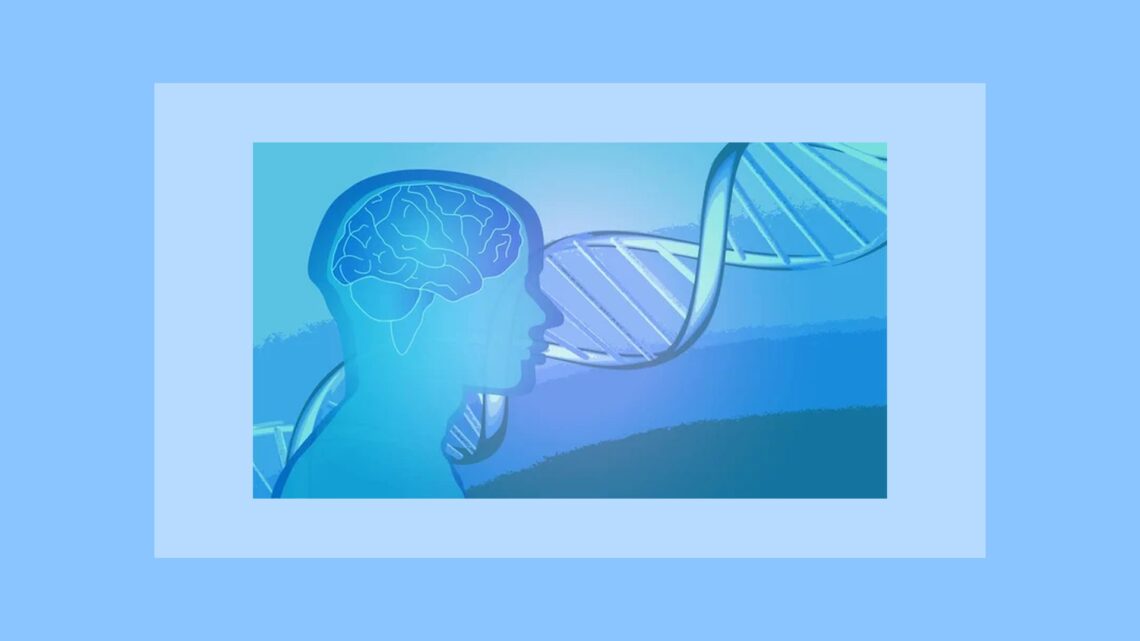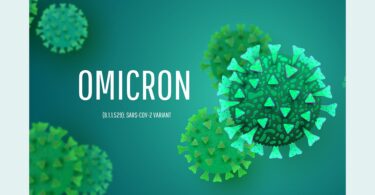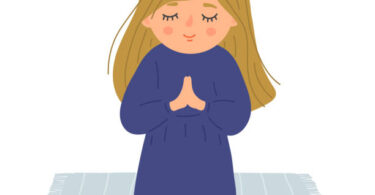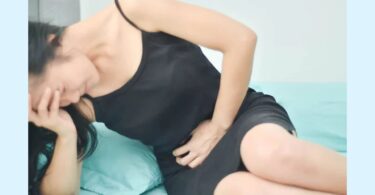In pediatric cases, we cannot always rely on the child being able to express their inner world in a way that we can understand with words. It is therefore even more important that we enter into the child’s world by fully embodying their unique perspective and experience from their point of view.
The homeopath must try to see and experience the world from their point of view. By using the observations of the parents and the teacher, the homeopath must imagine what the patient’s experience was, not what the homeopath or the other adults would feel in his shoes. What perspective would the homeopath need to have to bring these observations into a whole picture that would make sense?
The adults’ account of the triggering event and ensuing reactions and symptoms of the child, would not in and of themselves lead to an understanding of the actual experience of the child. We need to know how to identify the immaterial process that is causing symptoms on the material dimension. This case is a perfect illustration of how we cannot get to the whole through the parts.
Homeopath:
Melissa Dair (MICH Director and Homeopath)
1st Session: September 2013
Patient:
Seven-year-old male child presenting with absence seizures and a diagnosis of Epilepsy.
Patient’s chief complaint, etiology, symptoms, history:
- In October 2010, he first had homeopathic treatment for very occasional 1-second long absence seizures, observed by the mother, and had a good response to homeopathic treatment at that time.
- There was an incident in school in September 2013, with a follow-up meeting a week later about the incident. The patient felt that this meeting was unnecessary; that the incident had already been addressed and had been complete. Major absence seizures started less than two days after this meeting. In a 15-minute period, he would have up to ten absence seizures of up to ten seconds long each. This could happen hundreds of times per day. He would be walking, talking or eating, and would then freeze as if in a movie.
- Periodic Bedwetting is also an issue.
Etiology:
- September 5th, 2013, a girl in his class at school did not follow the rule of not getting up before she was supposed to, so the patient slapped her on the bottom and she cried.
- The teacher asked the patient to explain himself, which he did, saying that she should not have gotten up at that time, before the time allowed, and felt he should stop her from doing that. The teacher understood his explanation, but explained that he could have done that another way, for example, by telling the teacher and allowing her to handle it. The patient was given the space to evaluate his actions and was then asked what he should do to make amends. He said he should apologize and draw a picture of apology and wash her lunch utensils. He found this fair that he was allowed to decide what to do to repair his wrong actions. The girl accepted his apology and they hugged. The patient felt no repercussion from this incident, feeling that it had been brought to completion. He went home in good spirits.
- On September 12th, 7 days later, the patient suddenly finds himself sitting on a couch, surrounded by a group of 5 adults (principal, teacher, 2 sets of parents – girl’s and his) all sitting on chairs looking down on him. He had no idea why he was there. He is told he is there because of the incident in the previous week. The girls’ parents wanted him to know how wrong it was to hit their daughter’s bottom, that it was indecent and how he should never do this again. The patient physically curled down and sank deeper into the couch at his father’s side, visibly upset and close to tears.
- On the way home, the patient was upset and angry that he had lost TIME from playing. He had already apologized, and drawn the drawing. So why was this happening now!
- Saturday morning, September 14th, the patient began having regular absence seizures of 3 to 10 seconds long in duration.
Remedy Prescribed
- Aranea diadema 10MK – November 8th, 2013
Patient’s Dynamic
Parent’s and Teacher’s Observations:
- He is often out of sequence at school – answering in the place of another. When the teacher asks another child a question he will answer it, even though they are on the other side of the room and whispering.
- When playing games, if it is not going according to his plan, he will throw the whole game in the air. (games are of chance – and do not follow a logical sequence)
- When his sister is in her flow, doing something, he must come and antagonize her by cutting her short, stopping whatever she is doing.
- Father tries to speed things up, rush him to get ready for school or come to the kitchen table, which he resists. He insists on finishing what he is doing before doing what someone else wants him to do. (At school, he can follow the schedule of activities.)
- Active and alert – heard a girl being asked something in a whisper by the teacher across the room (first line above). But can also be focused on his work and is diligent at school.
- He says that when he is upset he needs “time”.
- Always active and doing something. Moves a lot.
- He would “cave” and dive under the bed, couch, desk or table if he saw that his parents were angry with him. Hides under his mother’s shirt.
- Very highly strung, very nervous.
- When he is angry, he throws tantrums that involve the thrashing of limbs outwardly. Or hides. Feels angry everywhere in his body – arms, legs, punching.
- Another example: Thought that his mother was going to carry him from the van. Instead, his father tried to carry him out and he refused. Finally, his mother came and got him and carried him in. He sat for 20 minutes with his coat and boots on, mournfully crying, sobbing that his mother was supposed to have carried him in. “I really wanted you to carry me out of the car, mommy”.
Embodying the Patient’s Experience
From here, we tried to embody the patient’s experience, based on the observations from the parents and teacher. What does it feel like to be in HIS shoes, and experiencing the world through HIS point of view?
- When his twin sister is doing something different and totally engrossed in that, he torments her and stops her from doing what she is doing because it’s as if everything that happens around him concerns him, and is directly connected to his center. He experiences himself as a center, sensing, knowing, there is an immediacy with everything going on around him. (girl getting up at lunch, whispering across the room). The external is experienced as an extension of himself. Everything that happens around him concerns him, is directly connected to him. He is susceptible to the outside being coherent with his center of knowing.
- He is susceptible to things happening around him that are not in sync with what he thinks.
- When an adult tells him to stop what he is doing and do something else, he doesn’t even seem to hear them, he goes on with what he was doing until he is finished. He desires a specific sequence, things cannot be out of order or confused. Each step is equally important. No step is more important that another. Work and rest, work and play are steps that follow each other and so are equally important, they each have their own time, and time belongs to him. When there is a sequence of events, rules that he does not understand, that do not make sense to him, he suffers when things that concern him directly are organized by someone else, for an end that will affect him, without him knowing what or why.
- A different order than what he thought represents a discordance between his center and the outside. He cannot adjust to an order of events that is different than how he thought it should happen. Everything must link to his center.
- He feels that rules don’t apply to him unless they make sense to him. His mother has to explain, dialogue with him, then he is ok and follows the rules. He hides when the environment does not reflect his center. He suffers, acts in a self destructive way when things are in opposition and cannot be brought together. When there is a sequence of events, rules that he does not understand, that do not make sense to him: when things happen by chance, by an order that is not logical to him, that he cannot know or understand.
- In the incident at school, he felt there was a time structure that needed to be respected but was not respected by the little girl. He was susceptible to this order of events and felt he must correct it. The supervisor explained to him what the order of steps should be – that he tells the supervisor and she takes care of it. He was allowed to create the steps required to correct his mis-action (disorderly – out of order of how things should happen). Things are in order. It’s done.
- Was upset and angry that he had lost TIME from playing after the incident at school.
- He acts as if everything happening outside must be in accordance with his rules, his idea, what is happening in him (being carried from the van). Things must happen in the logical sequence he feels they should happen in, and he feels he is the one to set that order, to defend that order (episode at school and van example). Does not want to feel any discordance between what he feels in his center and what is happening outside of him. This represents disharmony between the center and the outside.
- He strives to be the center of “Knowing” – If someone convinces him that he did not know what was happening, that he misinterpreted a situation, he goes into self reproach, self hatred. Repeats: “I am wrong, I am wrong.” Can hit himself, suffers deeply from discovering he misinterpreted as he can no longer trust his knowing.
Susceptibility to
In our next stage of the case synthesis, we look at what our patient is most stressed by, or “susceptible to” (either in a positive or negative way). In other words, what threatens or reinforces the definition of self or conditions of existence.
- Rules, time, order, sequence – completion
- Time
- Rules
- Order of Events
- Being told what to do when it doesn’t make sense according to him.
- Games not going his way (games of chance do not follow a logical sequence)
Susceptibility
We now examine the conditions of existence for this individual. What does he feel is necessary in life to exist, and what reinforces his sense of self?
He cannot fathom that he did not know what was happening in his environment. That he could not rely on his “center” to know his environment. That “his” time can be taken away from him.
Core Striving
Striving: A concept of an absolute that the individual strives to attain, the motive; it forms the means and ends of the dynamic movement of the patient totality of symptoms.
He must know everything that is happening in his environment, that his environment is ruled by the rules he understands and knows, in the sequence that he knows and understands. He knows the sequence or order of steps that bring completion, finality, end. Time, like this extended space, also “belongs” to him.
Sensations
Once we have understood the patient, we can focus in on the reactions and sensations that relate to the dynamic movement and the themes and issues that the patient is susceptible to.
Sensations:
- Active, moving, moving all over the place when talking, like a flurry of spinning and moving activity. In overdrive, active and doing something – moves a lot.
- Active and alert – can hear something across the room. But can also be focused on his work and task and diligent as school.
- When very very active – like karate or skateboarding will not have absence seizures – when engaged very actively.
- When he is angry, he throws tantrums that involve the thrashing of limbs outwardly. Feels angry everywhere in his body – arms, legs, punching. Pinching, hitting, angry. Feels the vital energy both centripetally and centrifugally.
- Hiding, Diving under, Caving.
- Taunts, Torments, Teases.
Repertorization
Repertorization did not, and could not bring us to this remedy. Even something as obvious as “Ailments from reprimands” did not produce Aranea as a possible choice.
Materia Medica of Chosen Remedy
Highlights from Repertoire de thèmes et de matière médicale dynamique by Guy Loutan (translated by MICH)
Suffers that the world moves to the beat of a clock that brings one inevitably to one’s death. Everything is perfectly regulated and organized, but by another, and for an objective that concerns him but of which he is ignorant. In the same way that action sustains thought, time sustains reality.
Has to accept that time is the best tool to realize oneself in this perishable world, as one is preparing for a world without time, where he will find his full blossoming, potential. The movement of man towards his objective is submitted to time, to a clock, and to a repeated rhythm. It is through this time that the mysterious alchemy is produced, which brings us to our accomplishment, fulfillment. Refuses time, has premonitory dreams so that he won’t be taken by surprise. The centre of gravity becomes empty and the periphery swells, fills, convulses, as if all the energy empties from inside and goes more into periphery. Like there’s no one home. Confusion of the head, relieved by resting the head on the hand. Clairvoyance with tobacco. Did not want to use the body to access knowledge, therefore thinking is impossible without holding his head. He must submit to his body so his intellect can function. If the spirit is central and more noble, the body is indispensable none the less. The centre functions if the extremities participate and support it, if he can rely on them. The centre of the spiderweb cannot exist without its spokes. Every movement requires support by one’s limbs, just as the spirit accesses to the information necessary by the senses. Movement relies on the limbs as the mind relies on the senses. The periodicity of work and rest shows that the steps must follow each other and cannot be confused. No step is inferior to the other, even if there is a hierarchy. The abdomen of the spider has the cross with 3 spokes, centripetal, centrifugal, explaining the mystery of the centre. The cross is diffusion, emanation but also recapitulation and bringing together. It’s an emblem of spokes coming from the centre, a symbol of the special totality or the union of opposites.
Other Remedy Possibilities
Theridion had been given in the past (before the incident at school and the marked presence of seizures) with great success and so was given after the incident at school. Although it addressed some behaviours and tantrums, it did not address the absence seizures at this time. Tarentula was then tried based on the rubric “ailments from reprimands”, but again had no success with the absence seizures. On further exploration into the core striving of the patient, we see that neither of these remedies covers the dynamic at the deepest levels. Once we really understood the patient’s dynamic and core striving through an exploration of the incident at school, we were able to come to a remedy that covered the dynamic of the patient at the deepest level, and address the symptom picture of his Epilepsy.
Prescription
- Aranea diadema 10MK – November 8th, 2013
Follow Ups
November 10th, 2013:
- Mother reported that the seizures stopped completely within 24 hours.
August 18th, 2014:
- The mother reported they had a Neurologist report which was all clear. There were no longer any signs of epilepsy.
- All other behaviours had improved and there were far fewer tantrums around the issues described above.
Melissa Dair – BEd, ND, DHom, MICH Director
Melissa is a MICH Homeopath, as well as being an experienced educator, learning facilitator, and student support coordinator. As a homeopath, Melissa accompanies her clients on an in-depth exploration of their inner world, to uncover meaning, connections, and the emergence of insights. She enjoys working with a variety of clients, and particularly enjoys working with adolescents and young adults. To learn more about Melissa, read her profile in our professional directory.
Kate Hudson – BA, E-Ryt, DHom, MICH Clinical Supervisor
Kate is a MICH Homeopath, and experienced workshop facilitator. She believes that the therapeutic process of inquiry is an important step in both the client’s return to health and in the path to selecting an appropriate homeopathic remedy to facilitate that. She works with clients from all walks of life, and has had particular success with those who suffer from anxiety and depression, or other mental emotional challenges.
To learn more about Kate, read her profile in our professional directory.
The Montreal Institute of Classical Homeopathy offers a full four year program clinical supervision, accredited training in the homeopathic clinic in Honduras and advanced continuing education for Homeopaths.
© Montreal Institute of Classical Homeopathy 2016 All rights reserved.





